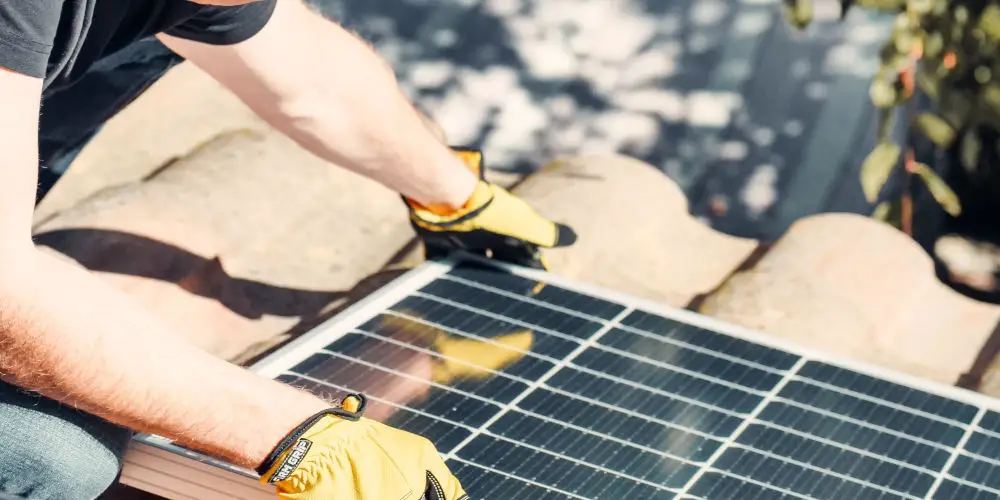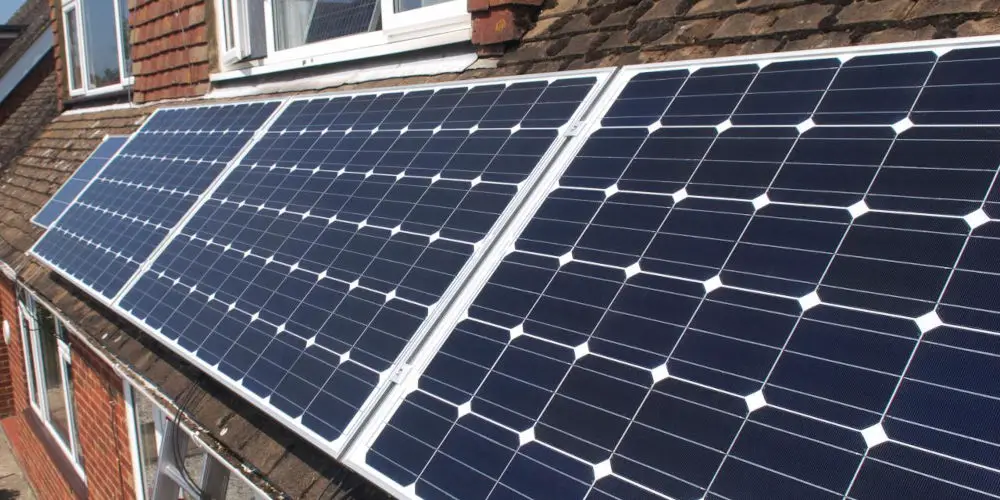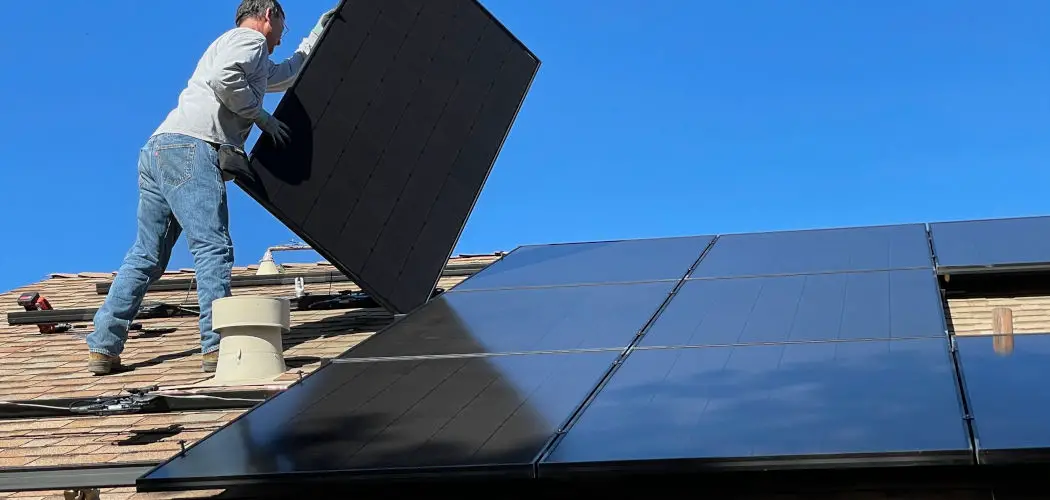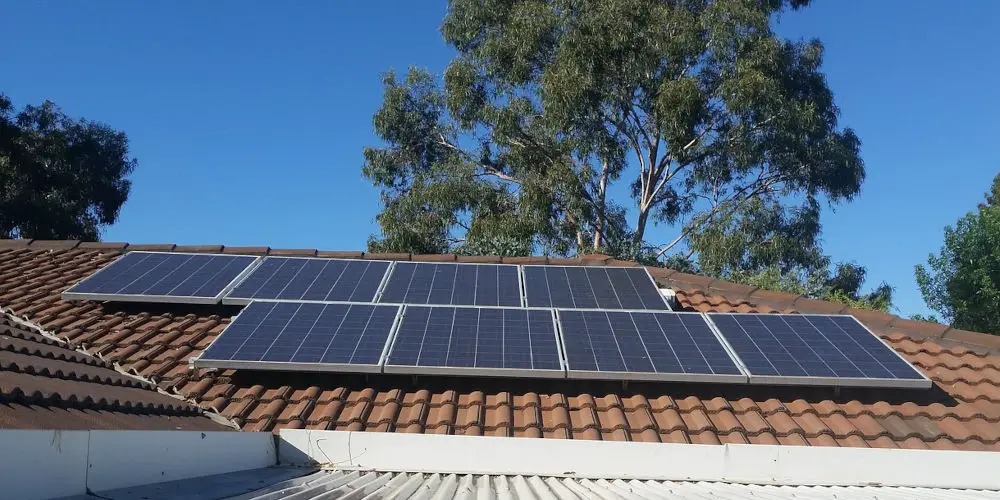How to buy solar panels for your property

For many, creating a greener home includes adding solar panels. Yet the process can seem daunting. Thankfully, knowing how to buy solar panels isn’t rocket science (pardon the pun), but you need to know the basics.
Solar panels are a fantastic way to lower your carbon footprint and reduce your dependence on dirty fuels. They can also significantly reduce your electricity bill, and you can even sell excess energy back to the grid.
But not all panels or systems are the same. The panel’s material, what solar inverter you use, and how it mounts to your roof will determine the effectiveness of your system.
So before you think about how to buy solar panels, you’ll want to research the different factors and decide which option is right for you.
How to choose the ideal panel material
To the untrained eye, all solar panels look the same. However, look closer, and you’ll spot several different material types.
Monocrystalline solar panels
Monocrystalline solar panels are the best at converting light to energy because of their high silicon purity. However, this means they are often the most expensive option.
Sadly, the manufacturing process used to create monocrystalline solar panels isn’t that green and produces a lot of waste. So, if you care about these issues, you’ll want to use another material.
Polycrystalline solar panels
Polycrystalline solar panels use all of the silicon material they’re manufactured with, making them the “greenest” option. While not as efficient as monocrystalline panels, polycrystalline solar panels are cheaper.
Thin-film solar panels
As the cheapest option, thin-film panels are cost-efficient to manufacture. However, they degrade faster than other types of panels and also require more maintenance.
Thin-film panels typically need the most space and are less practical for smaller homes. They may need up to twice as much room as a mono- or polycrystalline solar panel with the same energy output.
Amorphous solar panels
Amorphous solar panels are a subset of thin-film solar panels. They are smaller than other thin-film panels and use multiple layers of amorphous silicon cells.
Due to their construction, these panels can reach high levels of efficiency, around twice as high as other thin-film solar panels. However, amorphous solar panels are more expensive than other thin-film panels.

Selecting a Solar Inverter
Having solar panels alone won’t do much good. You also need a solar inverter to change the energy you capture in direct current (DC) and convert it to alternating current (AC). Both your home’s appliance and the National Grid run on AC current.
There are four main types of solar inverters. String inverters, micro-inverters, hybrid inverters and power optimisers.
String Inverters
A ‘string’ is a chain of solar panels arranged into groups or rows, connected in series. For a string inverter to work efficiently, all the panels in a string must be at the same pitch and orientation. A single inverter can connect to multiple strings.
The design isn’t very flexible, so isn’t ideal for more complicated projects. Another downside is if one panel is damaged or shaded, it affects the entire system’s performance.
Micro Inverters
Micro inverters are a relatively new technology but are a popular choice for home solar PV systems. A micro inverter solves the problems with a string inverter as they still work if there’s a fault or sharing on a single panel.
With a micro inverter system, each solar panel has an inverter to itself, meaning the system essentially runs in parallel. Many consider micro inverters to be a great way to install more solar panels onto a roof.
They are generally more expensive than a string inverter. However, a micro inverter system should increase your solar energy generation and overall return on investment.
Hybrid Solar Inverters
If you are installing a new Solar PV system with storage, then a hybrid inverter is worth considering. This type of invert converts the DC electricity from the panels to AC, allowing you to use it within your home. However, solar batteries store electricity in DC form.
A hybrid solar inverter converts the incoming DC into AC while sending any surplus DC power to store in a solar battery or to the grid. When your stored energy is in demand, you can convert the electricity to AC and use it in your property.
Hybrid inverters can be integrated directly into your solar battery. They are 50% more expensive than string inverters and can only be integrated with DC-coupled batteries, which might limit your battery choice.
Power Inverters
Offering many similar benefits to micro-inverters, power inverters (or DC power optimisers, as some call them) are also located on each panel, meaning they offer panel-level optimisation and performance monitoring.
Instead of directly converting DC to AC at the roof level, as with a micro-inverter system, the optimiser moves the DC power through to a string inverter. They are often a cheaper alternative to micro-inverters.
Power inverters are a cheaper alternative to Micro-inverters and allow for maximum energy production, reducing the impact of shading and even mismatch modules.

How will you mount your solar panels?
There are several ways to mount your solar panels. The best option depends on where you plan to position them.
Ballasted mount
If you live in an area with low wind, consider using a ballasted mount, as these attach to the roof at an angle several meters above the roof. This mounting type is efficient as they don’t penetrate the roof and receives more direct sunlight.
That said, this design makes the panels more vulnerable to being blown away, so don’t work well in windy climates. Ballasted systems are typically the cheapest mounting option, but they do make maintenance or remodelling hard.
Mechanically-attached mount
The most secure option is to use a mechanically-attached mount, as they tightly attach the panels to the roof at a slight or no angle. They also take up less space and are ideal for creating easy access to your roof, making it easier to maintain the panels.
Hybrid system
You can use a hybrid mount and enjoy the benefits of ballasted and mechanically-attached mounts. They attach to the roof in the same way as mechanically-attached mounts but may be slightly raised or angled like ballasted mounts. They are more secure while receiving more direct sunlight like ballasted mounts.
Fixed mount
If you can’t position your panels on the roof, choose a fixed mount. They follow the sun throughout the day, allowing the panels to absorb the maximum possible sunlight. If your solar panel is on the ground and receives some shade, fixed mounts help you to convert more energy.
What else to consider when buying solar panels
Depending on the application, some solar panels may fit your needs better than other options. So, it’s important to work with a reputable company when looking to buy solar panels and have them installed.
If you use a lot of energy, investing in a more expensive solar system can make sense. It should generate more energy and help you save more in the long term. Plus, you can always sell any excess energy using the Smart Export Guarantee (SEG) scheme.
For example, with high electricity bills, installing monocrystalline solar panels could be your best option. However, if you only require a little electricity, a thin-film solar panel may fit your needs.
You want to take a holistic view of your energy use and look at your bills for an entire year. That way, you’ll have an accurate sense of your energy consumption patterns, allowing you to evaluate different options and ensure you invest in the best one for your situation.
It’s best to start with a budget in mind, or you might blow a small fortune on a system that isn’t financially viable.
Seeking skilled Solar Panel Installers Cardiff? Our team of experts is at your service! Reach out today to discover more about our cost-effective and efficient solutions.

How to buy solar panels for your property
Learning how to buy solar panels requires researching to ensure you understand the different options. You now understand the different types of solar panels, inverters, and batteries you could use to create your system.
It’s important you calculate the cost of the system and a figure for the saving you’ll make. Using these two figures, you can calculate how long it will take for your system to pay for itself.
If you plan to sell energy using the SEG, you can add this to your calculation, as it’ll reduce the time for you to see a return on investment.
And that’s a basic introduction to how to buy solar panels for your property. Before you buy, you might wonder do solar panels increase home value? In most cases, the answer is yes.




